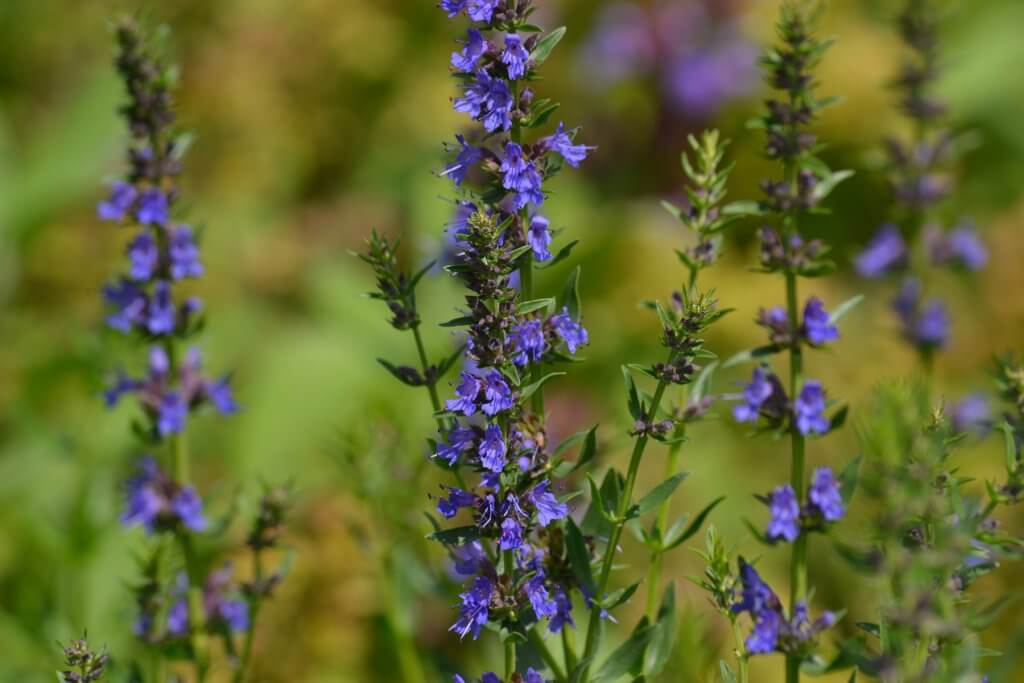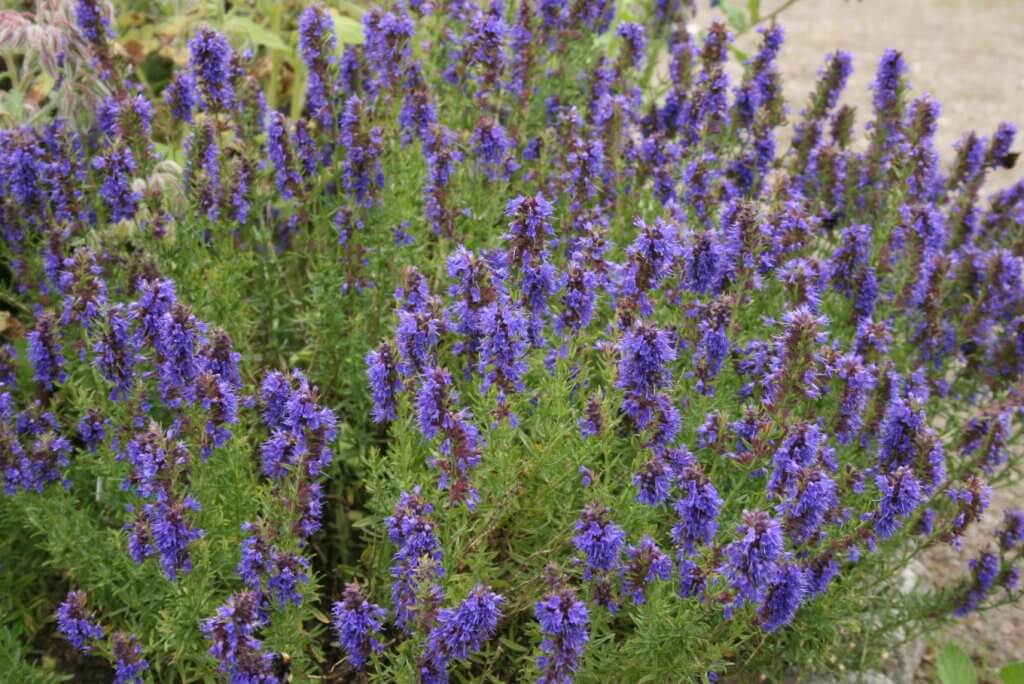Hyssop (Hyssopus officinalis) is a small perennial shrub that belongs to the mint family. It was once only native to parts of the Middle East and large areas of Southern Europe. However due to its revered medicinal value it has been traded and transported across the world. You can find it growing within the US and it is now widespread throughout Europe. It grows within open grassland, stony hillsides and meadows.
You will usually see hyssop growing as a bushy clump of woody stems and long, lance shaped, shiny leaves. It will usually reach a height of approximately 45cm, but some individuals may reach 1 meter. When flowering from July to September, delicate pink, purple or blue flowers emerge. Bees and butterflies are very attracted to fragrant hyssop flowers.

Cultivation and History of Hyssop
It has an extensive history spanning centuries for its use as a medicinal herb and also as an edible plant. From the ancient Greeks to the present day, hyssop can be used in a variety of ways.
Hyssop is a particularly hardy plant as it can withstand very dry conditions. Plant it within a sunny area within your garden to allow hyssop to thrive. If you live in a hot climate it may benefit from regular watering and partial shade. It can grow well within sandy and loamy soils, and well draining soil is best for planting.
You can grow hyssop indoors from seed in early spring. Place the seeds into the soil and scatter with a light dusting of top soil. You should begin to see seedlings after roughly 2-3 weeks. As soon as the first frosts have passed, indoor seeds can be transplanted to the garden. Space the seedlings roughly 12cm apart. If you live in a warmer climate, sow the seeds outdoors during late fall or early winter for seedlings to appear in the spring. You can also very easily propagate hyssop using root division or by growing cuttings.

Is Hyssop toxic?
You can safely consume hyssop leaves, flowers and shoots within small quantities suitable for food. However children should not receive hyssop as a herbal remedy. The essential oil can cause seizures, even in some adults. If you are pregnant or breast feeding you should also avoid hyssop. This is because there is a risk it could cause contractions, or a young infant could be effected through breast milk.
Uses

Culinary uses of Hyssop
You can use the flowers, young shoots and leaves of hyssop in a variety of ways within the kitchen. They have a strong aromatic flavor that resembles a cross between mint and sage. Add the flowers into salads or atop desserts as a decorative garnish. Use the leaves and young shoots to add an aromatic flavor to soups, salads, sauces and casseroles.
Medicinal uses of Hyssop
From sore throats to poor circulation, throughout the ages hyssop was thought to cure many illnesses. The oils, leaves and flowers of the plant have each been used in many herbal remedies. The leaves could be made into a poultice to soothe and protect wounds and burns.
You can create a tea from the leaves of hyssop to treat coughs, colds and flatulence. The essential oil can also be used in aromatherapy, but never consumed.
Did you know…
Due to its mild minty and almost ‘medicinal’ smell. Hyssop was once scattered on the floors of infirmaries and sick rooms to improve the smell and air quality.
Conclusion
An attractive plant with beautifully coloured flowers, hyssop would make a wonderful addition to a border or rock garden. With its culinary and medicinal uses it would also be a very useful addition to your herb garden too. The flavoring is particularly intense, so experiment with small amounts within your dishes first.
—————Written by Hannah Sweet
Hannah is a freelance writer and graphic designer from the UK. With a penchant for travelling, photography and all things botanical, she enjoys writing about a wealth of topics and issues, from conservation and slow living, to design and travel. Learn more about her writing and design services at www.sweetmeanders.co
Many of our readers find that subscribing to Eat The Planet is the best way to make sure they don't miss any of our valuable information about wild edibles.
See our privacy policy for more information about ads on this site






